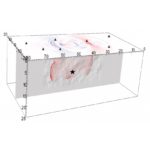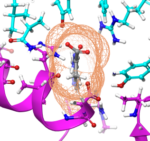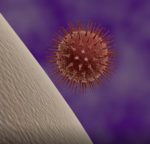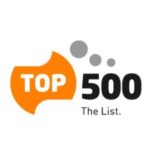A team led by C.S. Chang at Princeton Plasma Physics Laboratory (PPPL) has used the Oak Ridge Leadership Computing Facility’s (OLCF’s) 200-petaflop Summit and Argonne Leadership Computing Facility’s (ALCF’s) 11.7-petaflop Theta supercomputers, together with a supervised machine learning program called Eureqa, to find….
ORNL Offers Virtual Tour of Summit’s Supercomputer Center
Oak Ridge National Lab has released a virtual tour of the facility that houses Summit, the world’s second most power supercomputer. The tour is offered by the National Center for Computational Sciences (NCCS) and the Oak Ridge Leadership Computing Facility (OLCF). They’re giving access to Building 5600 on the Oak Ridge campus where resides Summit, […]
Supercomputing the San Andreas Fault with CyberShake
With help from DOE supercomputers, a USC-led team expands models of the fault system beneath its feet, aiming to predict its outbursts. For their 2020 INCITE work, SCEC scientists and programmers will have access to 500,000 node hours on Argonne’s Theta supercomputer, delivering as much as 11.69 petaflops. “The team is using Theta “mostly for dynamic earthquake ruptures,” Goulet says. “That is using physics-based models to simulate and understand details of the earthquake as it ruptures along a fault, including how the rupture speed and the stress along the fault plane changes.”
DOE INCITE program seeks proposals for 2021
The DOE INCITE program has issued its Call for Proposals. “Open to researchers from academia, industry and government agencies, the INCITE program is aimed at large-scale scientific computing projects that require the power and scale of DOE’s leadership-class supercomputers. The program will award up to 60 percent of the allocable time on Summit, the OLCF’s 200-petaflop IBM AC922 machine, and Theta, the ALCF’s 12-petaflop Cray XC40 system.”
NVIDIA Adds GPU and AI Expertise to COVID-19 HPC Consortium
A task force of NVIDIA computer scientists has joined the COVID-19 High Performance Computing Consortium, which brings together leaders from the U.S. government, industry and academia to accelerate research using the world’s most powerful HPC resources. “The consortium’s objective is to accelerate development of effective methods to detect, contain and treat the coronavirus. It will support researchers by providing access to 30 supercomputers with over 400 petaflops of compute performance.”
NPR Podcast: Scientists Use Supercomputers To Search For Drugs To Combat COVID-19
In this segment from the NPR Here and Now program, Joe Palca talks to researchers using ORNL supercomputers to fight COVID-19. “Supercomputers have joined the race to find a drug that might help with COVID-19. Scientists are using computational techniques to see if any drugs already on the shelf might be effective against the disease. The two researchers performed simulations on Summit of more than 8,000 compounds to screen for those that are most likely to bind to the main “spike” protein of the coronavirus, rendering it unable to infect host cells.”
ORNL Enlists #1 Summit Supercomputer to Combat Coronavirus
Researchers at ORNL used the Summit supercomputer to identify 77 small-molecule drug compounds that might warrant further study in the fight against the SARS-CoV-2 coronavirus, which is responsible for the COVID-19 disease outbreak. “The two researchers performed simulations on Summit of more than 8,000 compounds to screen for those that are most likely to bind to the main “spike” protein of the coronavirus, rendering it unable to infect host cells.”
Simulating SKA Telescope’s Massive Dataflow using the Summit Supercomputer
Researchers are using the Summit Supercomputer at ORNL to simulate the massive dataflow of the future SKA telescope. “The SKA simulation on Summit marks the first time radio astronomy data have been processed at such a large scale and proves that scientists have the expertise, software tools, and computing resources that will be necessary to process and understand real data from the SKA.”
World’s Fastest Supercomputers Look Familiar on November TOP500 List
Today marked the release of the 54th edition of the TOP500 list of the world’s fastest supercomputers. In summary, the top of the list remains largely unchanged. In fact, the top 10 systems are unchanged from the previous list. “The latest TOP500 list saw China and the US maintaining their dominance of the list, albeit in different categories. Meanwhile, the aggregate performance of the 500 systems, based on the High Performance Linpack (HPL) benchmark, continues to rise and now sits at 1.66 exaflops. The entry level to the list has risen to 1.14 petaflops, up from 1.02 petaflops in the previous list in June 2019.”
Tackling Turbulence on the Summit Supercomputer
Researchers at the Georgia Institute of Technology have achieved world record performance on the Summit supercomputer using a new algorithm for turbulence simulation. “The team identified the most time-intensive parts of a base CPU code and set out to design a new algorithm that would reduce the cost of these operations, push the limits of the largest problem size possible, and take advantage of the unique data-centric characteristics of Summit, the world’s most powerful and smartest supercomputer for open science.”











